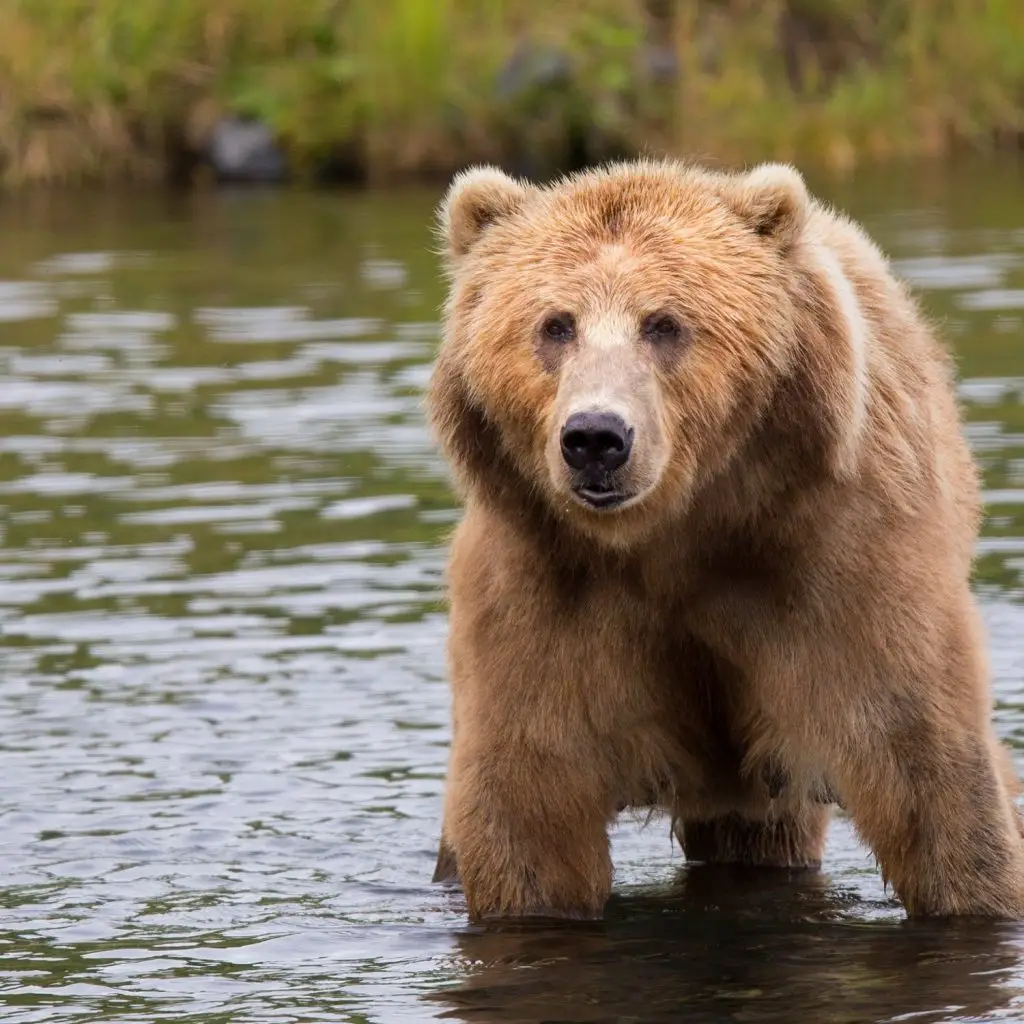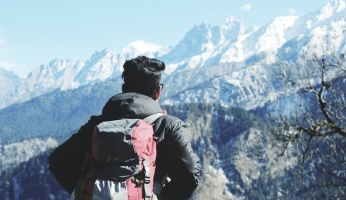Bear Safety: How to Stay Safe While Camping
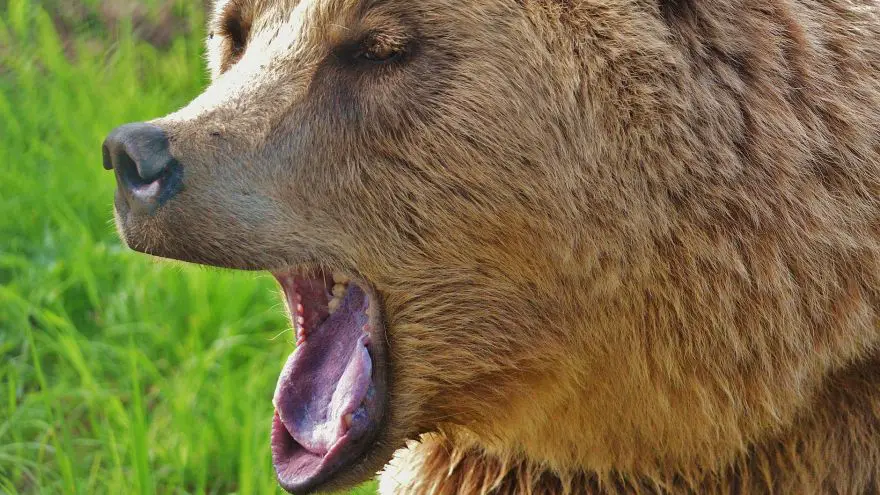 Bear Safety: How to Stay Safe While Camping
thegearhunt.com
Bear Safety: How to Stay Safe While Camping
thegearhunt.com
A lot of people might be hesitant when it comes to hiking and/or camping in bear country. Yes, there is the ever-present risk of being harmed by one of the big furry creatures while you are in their territory, but the chances of that are nominal. You can reduce that risk even more by learning about the creatures, learning how to stay out of their way, and what you should do if you run into one.
A Little Perspective

Most of the time, bears tend to avoid humans. Many times, hikers never even have an idea that they were near a bear because of the bear doing a fantastic job of avoiding them. Also, most actual encounters wind up with the bear going one way and the human going the other, with no harm being done to either. The chances of you actually being harmed by a bear are lower than those of you being struck by lightning, and they are drastically lower than those of you being injured in a car accident.
Bears are animals that are both intelligent and curious. They are capable of learning and they tend to modify their behavior with their experiences. The sense of smell in a bear is so good that they can smell some things from a mile away, and their sight is akin to our own sense of sight.
In North America, there are 3 species of bear. There are polar bears in Alaska and the Arctic regions, and they are white. In the lower 48 there are brown and black bears. You can identify brown and black bears by the following characteristics:
- The black bear is the species that is the most widely distributed and abundant of the bears in North America. A black bear isn’t always black in color though. They can be anywhere from black to a cinnamon color, and even sometimes white. That said, most of them are black.
- Brown bears are also known as grizzly bears. These bears tend to live right on or near Alaska’s southern coast due to the abundance of salmon there. Smaller grizzly bears can be found in the interior and northern parts of Alaska as well as in the northern Rocky and Cascade Mountains in the lower 48.
What do Bears Eat?
Grizzly bears that inhabit the Yellowstone Park area have been documented as eating more than 260 different types of animals and plants.
When you are camping, being aware of your surroundings, along with keeping your camp clean, and giving bears a wide berth, are among the most critical things you can do when you want to avoid contact with bears. This can assure that your visits to nature are both enjoyable and safe.
Brown and black bears are both omnivores – which just means that they consume both animals and plants. The diet of a typical bear will include things like animals (even dead ones), fish, insects, berries, roots, and grasses. A bear will increase the amount they eat as hibernation draws near. They are opportunistic when it comes to eating and have been known to get a taste for things like pet and even human food. Additionally, when a bear is looking for food, they can become attracted to things that aren’t foods, but have a scent, like toothpaste, garbage, bird seed, grills, cooking utensils, some medications, soap, and handy wipes. Most of the bear-human conflicts happen when the bear gets access to and becomes used to sources of food that stem from humans.
Safely Camping in Bear Country
The most critical thing to keep in mind when you are camping in areas where bears can be found is to never let them get ahold of your garbage, food, or anything else that can attract them. Bears who learn to get food in and around campgrounds can become aggressive and bold when they are trying to get at these foods. They have been known to damage tents, vehicles, and other property. There have even been rare cases where they go into tents looking for food and attack the people inside. These people have been injured and some have even died. When a bear behaves in this fashion, it is typically killed by people known as bear managers. Bears can be attracted to the following:
- Human food of any kind
- Garbage
- Cooking oils
- Closed canned drinks
- Hummingbird feeders and bird seed
- Livestock feed and pet food
- Utensils and cooking pots
- Fuel for lanterns and stoves
- Toothpaste, lotions, insect repellents, and cosmetics
If you are camping and have any of these items, they need to be safely stored in a place that is where bears can’t get to them. This can be in one of the following:
- In a food box that is provided by your campsite and is bear resistant
- In a vehicle with hard sides (things like pop up campers, tents, and coolers aren’t bear resistant)
- In a backpacker food cache that is bear resistant
- Suspended a minimum of 10 feet from the ground and 4 feet from any vertical support
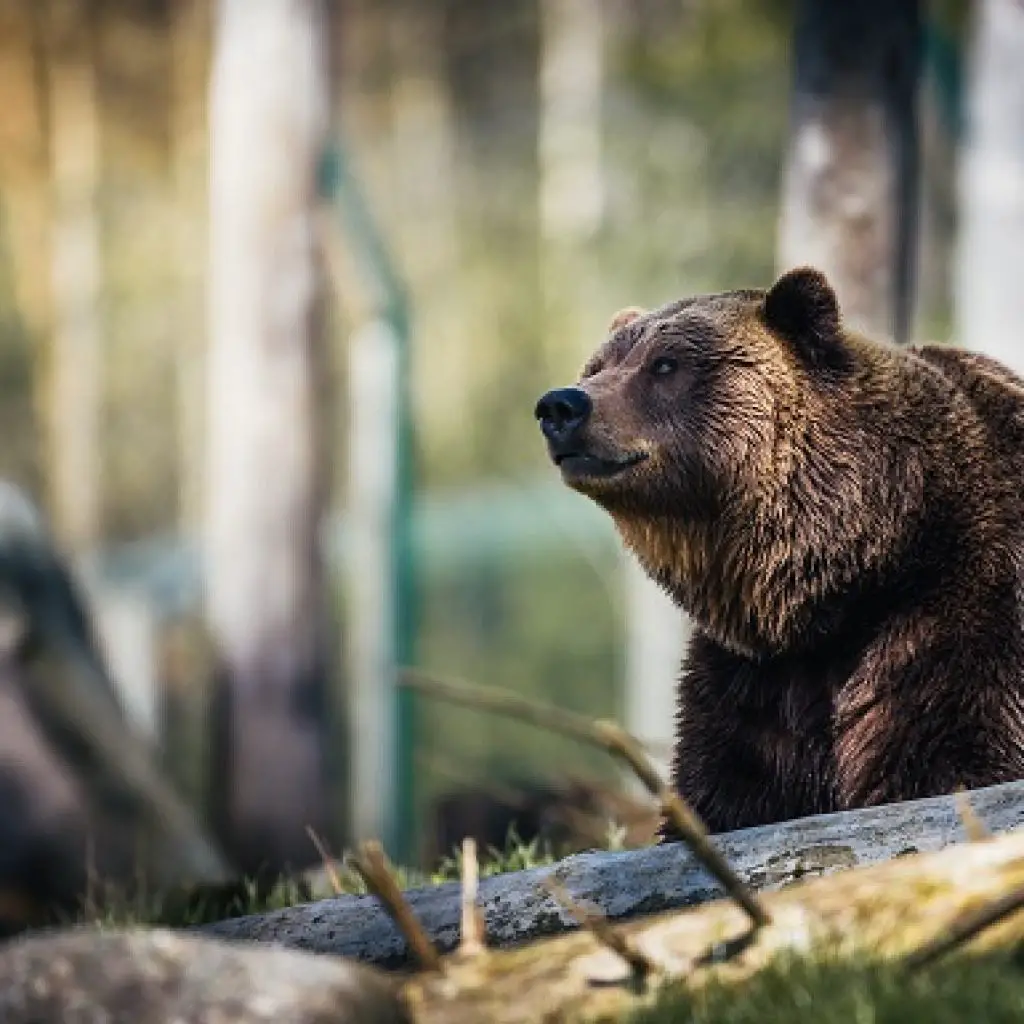
You also need to ensure that you are following all of the local regulations. Additionally, you need to adhere to the following guidelines:
- Never sleep in clothes that you wore when you cooked.
- Keep pets on a leash.
- Avoid foods that are highly aromatic – like fish and bacon.
- Never sleep out in the open, but in a tent.
- Don’t bury things like food scraps and garbage, pack them out.
- At night, keep your bear spray and a flashlight in the tent with you.
- In a camp, when possible, keep your sleeping area a minimum of 100 yards from food storage and cooking areas.
- Never take food into your tent.
- Camp away from things like carcasses, berry patches, and fresh signs of bears.
- If a bear happens to get into your camping area and is behaving in a manner that is bold, and you have tried to scare it away but are unsuccessful, immediately get to an area that is safe. The bear might be habituated to humans and can even be conditioned to the foods found in human campsites. Bears like this can be dangerous. Report anything like this to the local authorities as soon as possible.
Encountering a Bear While You are Hiking
While your instincts might be to run in the opposite direction if you run into a bear, this can be the worst thing that you can do. That is because running can actually trigger the predatory instincts of the bear and it will want to catch you. Bears can run at up to 35 mph, which means that it can cover the space of 100 yards in around 7 seconds – much faster than you. Before you run, assess your situation.
- If the bear has yet to notice you, calmly and quietly get away from the area as soon as you can while trying not to be noticed by the bear. Never approach the bear – for pictures or for any other inane reason.
- If the bear happens to have noticed you, let it know that you are human. Keeping your voice calm, talk to the bear. Put your arms up to your sides and move them up and down slowly. You need the bear to know that you are a human and not some type of prey or another bear. Do not make direct eye contact with the bear, but you do need to keep an eye on it to know what it is doing. There are typically 3 things it will do:
- It can run away
- It can just look at you and then go back to whatever it was doing
- It can approach you
Your next action depends on what the bear does.
- If the bear begins to run away, walk in the opposite direction. You need to vacate the area so as not to have another encounter.
- If it looks at you and then resumes what it was doing, talk to the bear while backing away. Don’t turn your back on the bear until you can no longer see or hear it.
- If it approaches you, stop and stand your ground. Stay as calm as possible and try to detect any clues to the bears intentions or mood. A bear that is defensive will feel as if you are a threat to him. It might woof, growl, smack its lips and/or salivate, charge suddenly, slap at the ground with his front feet, wave his head back and forth, or chomp his teeth.
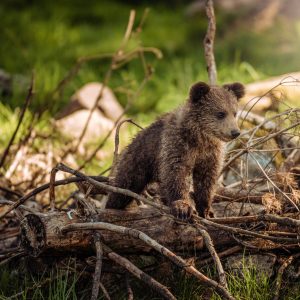 A bear that is acting like this might be on the defensive due to proximity to food, its personal space, or its cubs. Continue talking to the bear and act in a manner that will be perceived as non-threatening. When it stops approaching you, keep backing up. If it charges you or begins to approach, stop again until the bear backs up before you begin to back up again. If the bear behaves in this manner and attacks you, play dead. Lie flat on the ground. Keep your head face down and make sure that you cover your neck and head with your hands and arms. Don’t take your backpack off. It can offer a bit of protection for your back. If the bear happens to roll you over, keep rolling until you are back in a face down position. Don’t make a sound and don’t make a move until you are certain that the bear is no longer in the vicinity. Moving too soon can mean the bear notices and comes back for another attack. It might get the idea that you will attack it. Remember that most bear attacks are because they are being defensive about something.
A bear that is acting like this might be on the defensive due to proximity to food, its personal space, or its cubs. Continue talking to the bear and act in a manner that will be perceived as non-threatening. When it stops approaching you, keep backing up. If it charges you or begins to approach, stop again until the bear backs up before you begin to back up again. If the bear behaves in this manner and attacks you, play dead. Lie flat on the ground. Keep your head face down and make sure that you cover your neck and head with your hands and arms. Don’t take your backpack off. It can offer a bit of protection for your back. If the bear happens to roll you over, keep rolling until you are back in a face down position. Don’t make a sound and don’t make a move until you are certain that the bear is no longer in the vicinity. Moving too soon can mean the bear notices and comes back for another attack. It might get the idea that you will attack it. Remember that most bear attacks are because they are being defensive about something. - Predatory and curious bears tend to not make any sort of noise. It will point its ears forward and its attention will be focused on you in a manner that is not agitated but is calm. If you try to retreat but the bear follows you slowly and deliberately, but still shows no signs of aggression, you might want to try another tactic. Become aggressive and let the bear know that you won’t be an easy meal, and that you are not to be messed with. Try to make yourself appear as large as possible. Maintain direct eye contact. Yell. Pick up a large stick to hit the bear with if it gets close enough. If you are attacked by a bear acting like this, focus on its face when you fight back.
Bear Spray
Pepper spray made specifically for bears has been very effective when it comes to repelling an aggressive or approaching bear and reducing the danger of human injuries. In fact, it can even be more effective than a gun when it comes to preventing human injuries.
Bear spray is actually a chemical solution that includes 1 or 2% capsaicin. This is the chemical that is in hot peppers, and it makes the spray incredibly irritating to the lungs, mouth, throat, eyes, and nose. It will temporarily disable a bear while causing no permanent injury to the animal.
You should only ever discharge this spray at a bear that is approaching, aggressive, or charging. Never spray it on your backpack, clothes, tents, or other people. Bear spray does not repel bears like bug spray repels insects. If you decide that it would be beneficial for you to carry bear spray, ensure that the one you buy has the following attributes:
- An EPA registration number. This number lets you know that the product is one that is certified for bears and that it has undergone testing to prove its effectiveness.
- The spray should be a minimum of 7.9 ounces. If you can find a bigger can, get the bigger one.
- Bear spray should exit the can in a sort of expanding cloud as opposed to a stream. It should go out a minimum of 30 feet.
- Bear spray should include a label that states that it is strictly for use on bears. Never use people pepper spray on bears.
Sources
- YouTube.com, Camping Bear Safety
- NPS.gov, Safety in Bear Country
- MountainNature.com, Tips for Safe Camping in Bear Country
- TripSavvy.com, Bear Safety Tips





